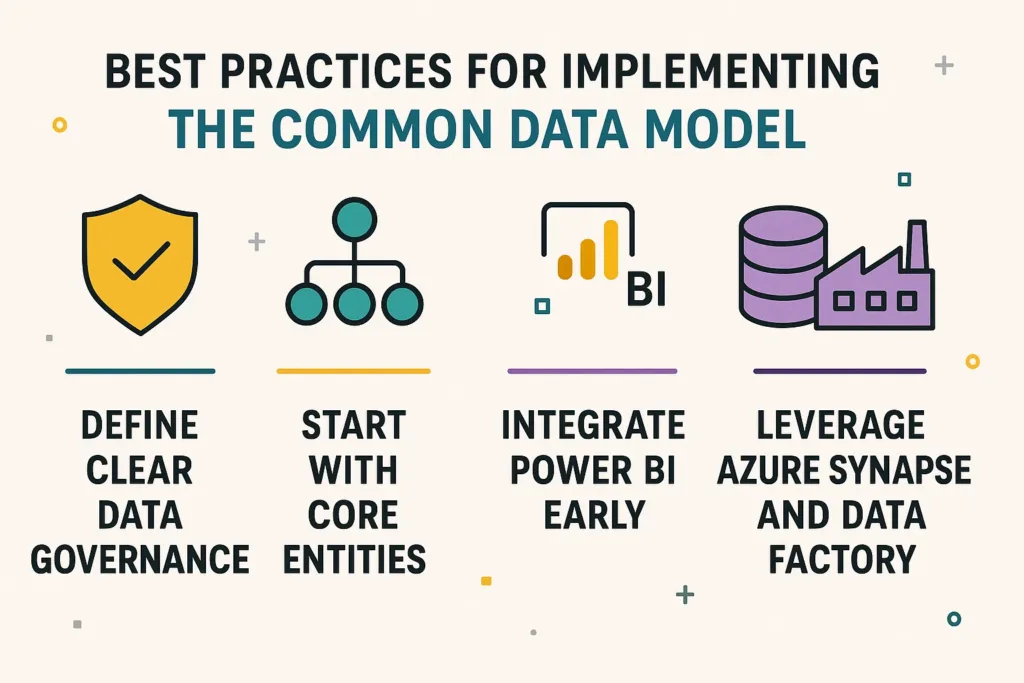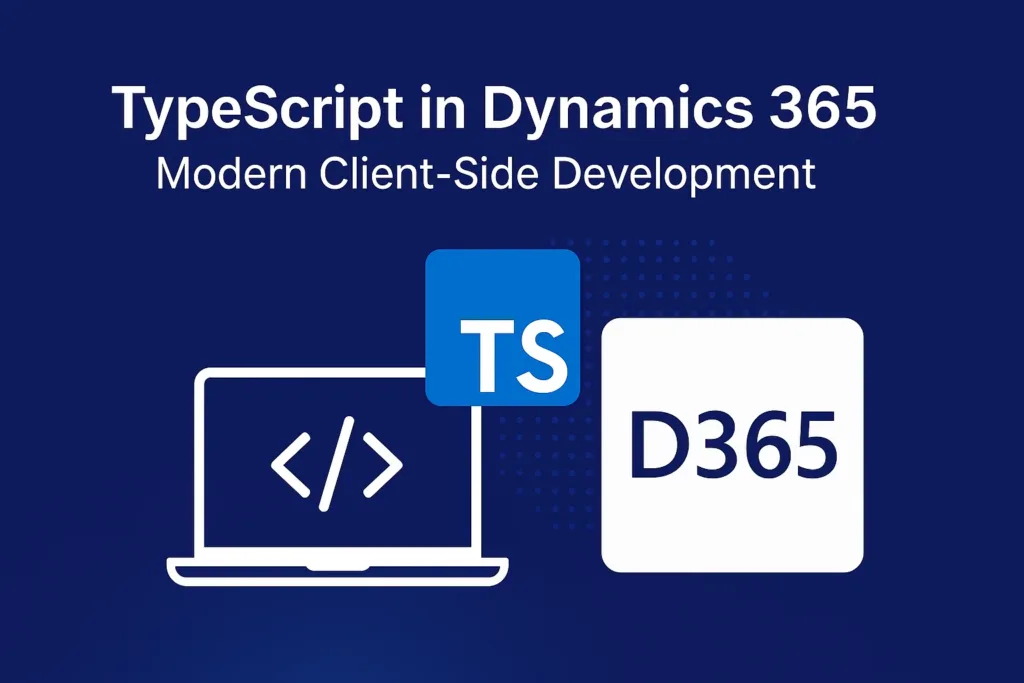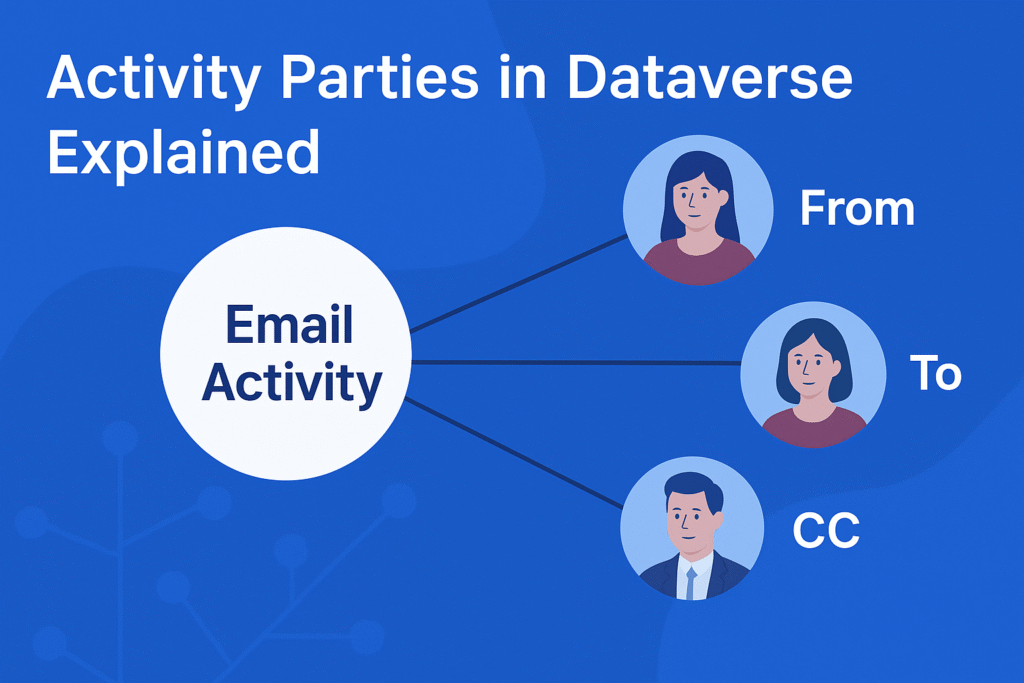Table of Content
- Introduction
- What Is the Common Data Model (CDM)?
- Why the Common Data Model Matters
- How the Common Data Model Works in Dynamics 365
- Common Data Model and Power Platform Integration
- Extending the Common Data Model
- Best Practices for Implementing the Common Data Model
- The Role of CDM in Digital Transformation
- Conclusion
- FAQ’s
Introduction
In today’s digital ecosystem, data consistency and interoperability are crucial for success. Microsoft’s Common Data Model (CDM) addresses these needs by providing a standardized schema that enables seamless data exchange across Dynamics 365 (D365) and Power Platform applications like Power Apps, Power BI, and Power Automate.
Let’s explore how the CDM simplifies data management, boosts integration efficiency, and empowers organizations to make data-driven decisions.
What Is the Common Data Model (CDM)?
The Common Data Model is a shared data language used across Microsoft’s business applications. It defines a set of standardized entities, attributes, and relationships that describe core business concepts—such as customers, products, and orders—in a consistent format.

Key Features of CDM
- ✅ Standardized entities that promote data uniformity
- 🔗 Interoperability between D365 apps and Power Platform
- ☁️ Data storage flexibility using Dataverse
- 📊 Integration-ready architecture for Power BI and Azure services
Why the Common Data Model Matters
When data lives in silos, achieving insights or cross-platform functionality becomes difficult. The CDM bridges these gaps by enabling a unified data layer that supports:
| Challenge | CDM Solution |
|---|---|
| Inconsistent data structures | Unified schema across all apps |
| Complex integrations | Simplified data mapping |
| Limited analytics | Common structure for Power BI insights |
| Poor scalability | Centralized, extensible model |
Benefits at a Glance
- Faster app development using ready-to-use schemas
- Reduced integration cost and complexity
- Improved accuracy with standardized definitions
- Enhanced collaboration between departments and teams
How the Common Data Model Works in Dynamics 365
Dynamics 365 applications—such as Sales, Marketing, Finance, and Customer Service—are built on Dataverse, which relies on the CDM. This ensures that all modules use the same entity definitions and relationships.
Example: Customer Entity Across Apps
| Application | Entity Usage |
|---|---|
| D365 Sales | Customer as Account/Contact |
| D365 Marketing | Customer as Lead/Contact |
| D365 Customer Service | Customer as Case Owner |
By leveraging CDM, these entities are automatically aligned, meaning updates made in one app reflect across others — ensuring real-time consistency.
Common Data Model and Power Platform Integration
The Power Platform—consisting of Power Apps, Power Automate, Power BI, and Power Virtual Agents—relies heavily on CDM for data exchange and analytics.
- Power Apps: Quickly build apps using standardized entities from CDM.
- Power Automate: Create cross-system workflows without manual mapping.
- Power BI: Generate unified dashboards with connected data sources.
Example Workflow
- Data captured in Power Apps (Customer form)
- Automatically synced to Dataverse using CDM
- Visualized in Power BI for real-time insights
- Alerts triggered via Power Automate
Extending the Common Data Model
While CDM provides standard entities, businesses can also extend or customize entities to fit unique operational needs.
Customization Options
- Add custom fields or relationships
- Create industry-specific schemas
- Map external data sources (ERP, CRM, legacy apps)
This flexibility ensures organizations can standardize their core data while still maintaining the agility to innovate.
Best Practices for Implementing the Common Data Model

To fully leverage CDM’s potential, follow these best practices:
Define Clear Data Governance
Establish naming conventions and ownership to maintain consistency.
Start with Core Entities
Begin with standard CDM entities like Account, Contact, and Product, then extend gradually.
Integrate Power BI Early
Use CDM-aligned data models to enable consistent reporting across business units.
Leverage Azure Synapse and Data Factory
For large enterprises, combine CDM with Azure tools for advanced analytics and scalable data pipelines.
The Role of CDM in Digital Transformation
The Common Data Model plays a vital role in digital transformation strategies by enabling data interoperability, faster app deployment, and unified analytics. It bridges Dynamics 365, Power Platform, and Azure—helping businesses achieve true data-driven intelligence.
Conclusion
The Common Data Model in D365 is not just a technical framework—it’s a foundation for connected business operations. By standardizing data across Microsoft’s ecosystem, CDM helps teams collaborate efficiently, make informed decisions, and scale innovation effortlessly.
If you’re looking to implement or optimize CDM within your Dynamics 365 environment, partnering with experts can accelerate the process and ensure long-term data consistency.
About Skysoft Connections
At Skysoft Connections, we specialize in Microsoft Power Platform and Dynamics 365 solutions, helping organizations integrate, automate, and visualize their data using the Common Data Model. Our team ensures smooth deployment, customization, and scalability—enabling your business to thrive in a connected ecosystem.
👉 Explore our services to standardize your data architecture and unlock unified business insights.
Read more : typescript in d365 modern client side development
FAQ’s
The CDM is a shared data schema that standardizes business data across Microsoft applications like Dynamics 365 and Power Platform.
It provides consistent data definitions, making it easier to connect and share information between apps without complex mapping.
Yes, CDM allows organizations to extend entities to match industry or business-specific needs.
Absolutely. CDM provides structured data that Power BI can directly consume for unified reporting and analytics.
 is a software solution company that was established in 2016. Our quality services begin with experience and end with dedication. Our directors have more than 15 years of IT experience to handle various projects successfully. Our dedicated teams are available to help our clients streamline their business processes, enhance their customer support, automate their day-to-day tasks, and provide software solutions tailored to their specific needs. We are experts in Dynamics 365 and Power Platform services, whether you need Dynamics 365 implementation, customization, integration, data migration, training, or ongoing support.
is a software solution company that was established in 2016. Our quality services begin with experience and end with dedication. Our directors have more than 15 years of IT experience to handle various projects successfully. Our dedicated teams are available to help our clients streamline their business processes, enhance their customer support, automate their day-to-day tasks, and provide software solutions tailored to their specific needs. We are experts in Dynamics 365 and Power Platform services, whether you need Dynamics 365 implementation, customization, integration, data migration, training, or ongoing support.


